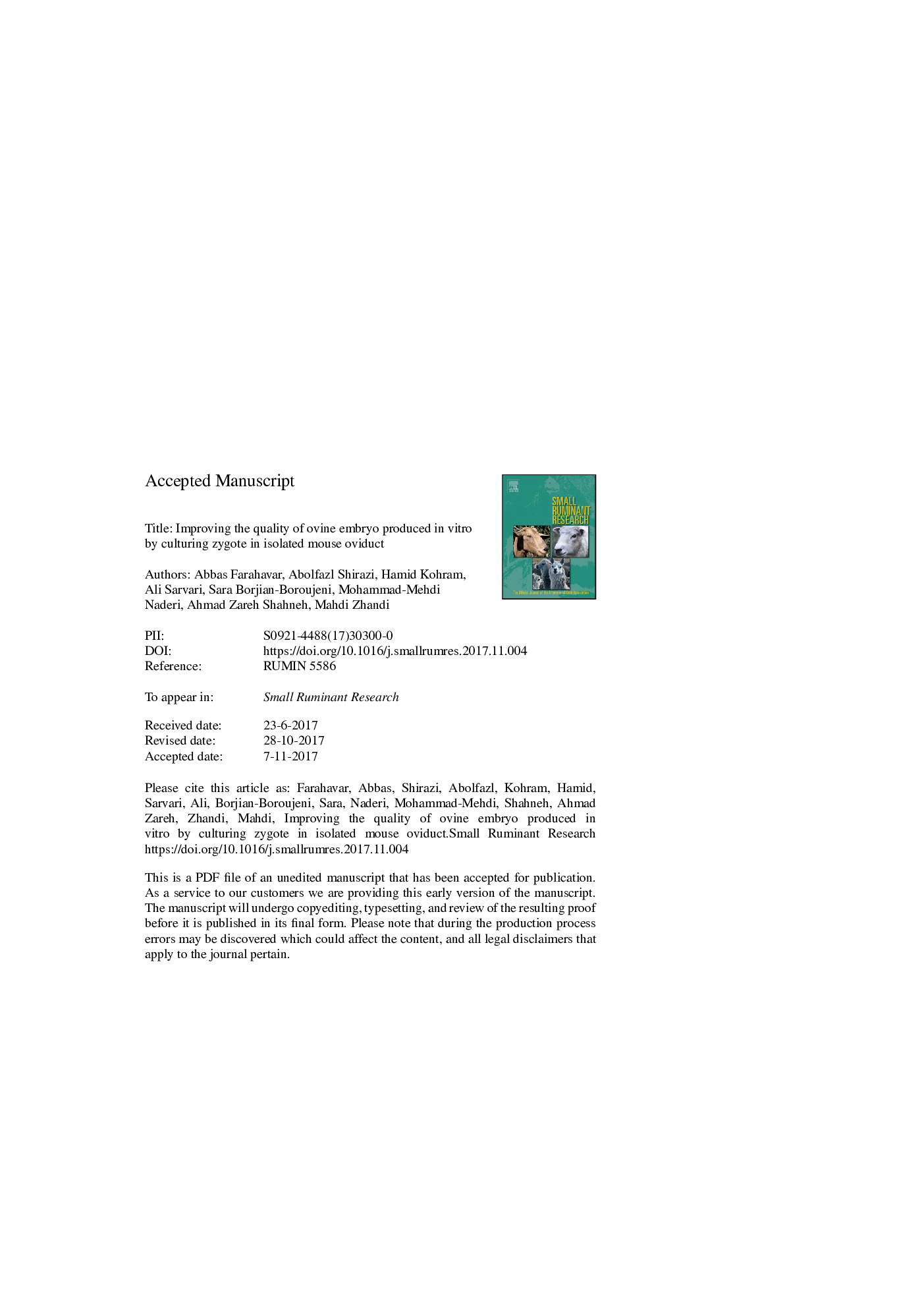| Article ID | Journal | Published Year | Pages | File Type |
|---|---|---|---|---|
| 8504232 | Small Ruminant Research | 2018 | 17 Pages |
Abstract
Several studies indicate the absence of oviduct or its assistance may compromise the developmental competence and quality of the embryos produced in vitro. This study was aimed to evaluate the quality of embryos produced in vitro by culturing zygotes in isolated mouse oviduct and oviduct epithelial cell monolayer. The in vitro produced ovine zygotes were cultured for 7â¯days in the following culture systems i) ampullae of isolated C57BL/6 mouse oviduct (IMO), ii) ovine oviduct epithelial cell monolayer (OCM), and iii) chemically semi-defined medium (CSM) as control. In CSM, embryos were cultured in synthetic oviductal fluid medium supplemented with essential and non-essential amino acids and bovine serum albumin (SOFaaBSA). The cryotolerance of resultant blastocysts and their apoptotic cells (TUNEL assay) were then evaluated. The rate of blastocysts in OCM (37.9â¯Â±â¯16.7) was lower than in IMO (50.6â¯Â±â¯25) and CSM (49.7â¯Â±â¯21.9) groups (Pâ¯<â¯0.05). In vitrified/warmed blastocysts ICM:TE ratio in IMO (0.33â¯Â±â¯0.14) was higher than other groups (0.23â¯Â±â¯0.16 and 0.22â¯Â±â¯0.10 in CSM and OCM, respectively). Similarly, cryosurvival of vitrified blastocysts and hatching rates tended to be higher in IMO compared to other groups. In vitrified/warmed blastocysts the proportion of tunnel positive cells of ICM in OCM (31.7â¯Â±â¯11.5) was higher than CSM and IMO groups (23.7â¯Â±â¯17.9 and 23.0â¯Â±â¯11.4). In conclusion, culture of ovine zygote in isolated mouse oviduct could increase the quality of resulting blastocysts.
Keywords
Related Topics
Life Sciences
Agricultural and Biological Sciences
Animal Science and Zoology
Authors
Abbas Farahavar, Abolfazl Shirazi, Hamid Kohram, Ali Sarvari, Sara Borjian-Boroujeni, Mohammad-Mehdi Naderi, Ahmad Zareh Shahneh, Mahdi Zhandi,
